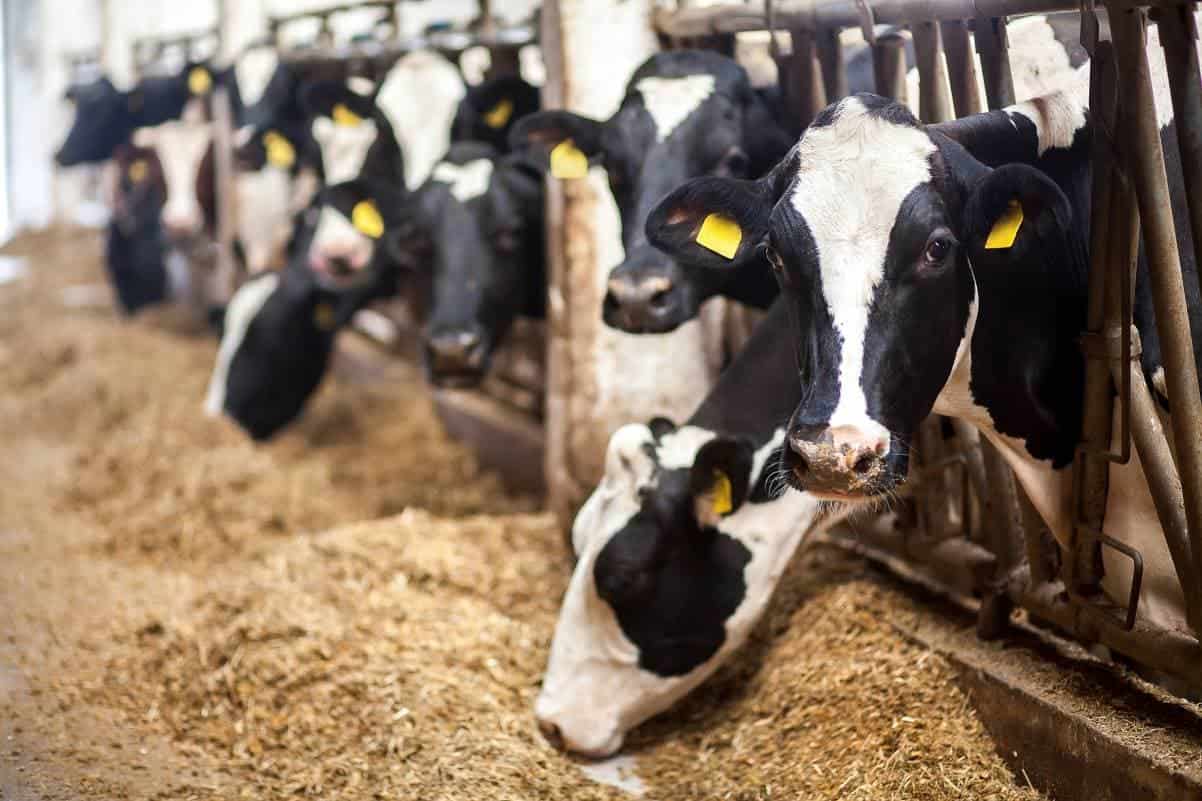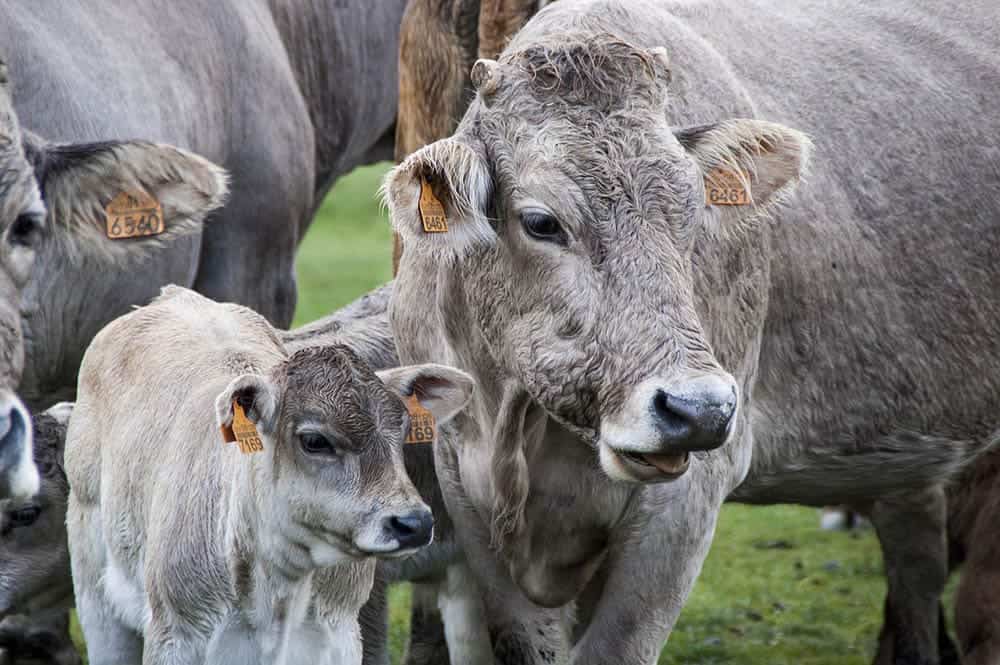We’ve all been entranced by advertisements and adorable videos of happy cows. But how exactly does one make a cow happy? One thing that cows need to be happy is space. Just like humans can and do complain about living in cramped quarters, cows don’t want to live shoulder-to-shoulder either. Still, how much space does a cow need? How large does your property need to be before you can consider raising cattle? Here’s what science has to say about it.
 Indoor Space
Indoor Space
One significant facet of cattle ownership is having a barn. A barn is a critical fixture not just for the comfort of your cattle but for their safety as well. Cattle are not immune to wind, rain, or illness resulting from being left out in the rain. They will try to find shelter even if you don’t provide any, but sheltering them is part of your job as a cattle owner.
Barns must be built large enough to accommodate the number of cattle you own or plan to own. Catskill Animal Sanctuary recommends that a barn provide at least 80 square feet of space for each cow. Cows can easily weigh over 1,000 pounds and will need room to accommodate all that weight comfortably.
While cows do need a lot of lateral space to be comfortable, their accommodations need not be fancy. Cows will generally prefer to be outdoors when they can be, and while they’ll need to have some shade to get out of the sun, water, and grazing grass, their indoor needs are minimal. They don’t need much more than a roof, four walls, and something comfortable to lay on indoors.
A mother that has recently given birth and her calf will need to be kept inside the barn and out of the elements for a bit. But most cows can and would prefer to go outside if the weather is nice.

Outdoor Space
In addition to an indoor barn, cows will need access to a grazing lot. Even if you feed your cows hay, time in the sunshine and grass is necessary to keep them happy and comfortable. It’s generally thought that 1 acre of land can accommodate about 1–2 cows, depending on who you ask. However, Catskill recommends that you have at least 2 acres of land per cow.
It sounds like a lot, but you’ll soon find out just how quickly a single cow can graze down an acre of land. If you intend to keep cows in a pasture smaller than 5 acres, you’ll need to buy hay to feed them.
During calving season, it takes about 1.5–2 acres minimum to feed a cow-calf unit.
Rotational Grazing
Rotational grazing is a process where farmers move their livestock around their grazing pasture to allow time for the pasture’s grass to regrow. The rotation is measured in cow-days-per-acre. In other words, the number of days you can have your cow on an acre of land before you have to move them.
The general rule of thumb is 50 days per 1 cow per 1 acre. So, 1 acre of land can graze one cow for 50 days or 50 cows for one day. Using a grazing rotation can help decrease hay costs but requires a huge property, even for just one or two cows.

Do I Need a Large Property to Raise Cows?
While you need a property of at least 2 acres to have a happy cow, there are plenty of farmers who start and maintain happy, small herds with 5–10 acres of land. The secret is enriching their indoor life and ensuring that they have plenty of hay to graze on indoors to make up for the smaller grazing space.
If you are only planning to raise one or two cows for family use, it’s entirely possible to maintain a happy cow on a one or two-acre plot of land. When doing so, it’s essential to consider all the cow’s needs.
You’ll need to account for the smaller grazing space by giving them hay to eat indoors. Cows eat a lot of food and will typically graze their pastures all day. If their range isn’t large enough to accommodate their food needs, they’ll need to be fed supplementary foods.
Since they’ll spend more time indoors, you’ll also want to make their indoor life more comfortable. While hay to eat and lay on is pretty much a given fixture when building a barn, you’ll want to think of smaller things you can do to enrich their indoor life if they’re going to be spending more time there.
You’ll also want to strongly consider the size of your herd. If you’re looking to breed stock calves or have a larger herd, you’ll need a larger pasture. Cows aren’t meant to be indoors all the time, and they don’t like it. It would be inhumane to have too many cows in a small pasture.
 Final Thoughts
Final Thoughts
While the school of thought is still new, few would say that cows don’t deserve to be happy. The push for ethical farming standards is growing, and future cows will thank us for putting the work in to ensure a high standard of living for them.
Cows have the same propensity as any other creature to experience happiness and sadness. So, it’s our job as cow owners to ensure that they’re getting what they need when they need it.
People looking to raise cows should ensure that their property has the proper space and fixtures for raising cattle. If your property came with a barn, survey it yourself to ensure that you don’t overpopulate your barn and if you only have space for one or two cows, consider only raising heifers instead of having a bull.
Livestock animals have the same ability to feel like any other animal and should be treated with respect. Together, we can all work to better the lives of all the animals in the world, whether we live as companions or colleagues.
- Next on your reading list: How High Can A Cow Jump? Can They Jump A Fence?
Featured Image: Pixabay
